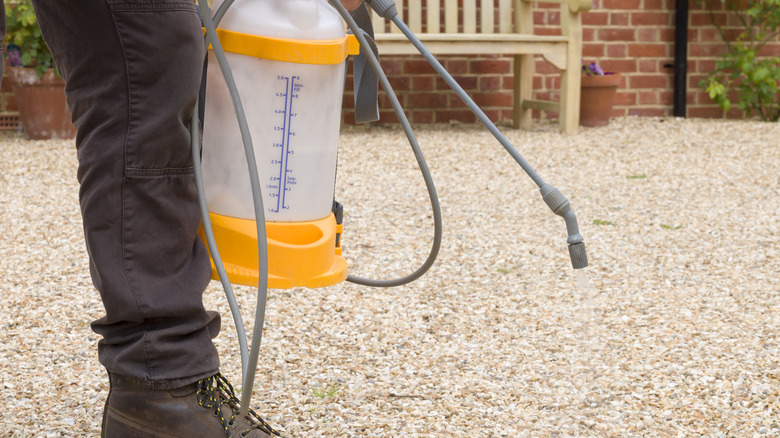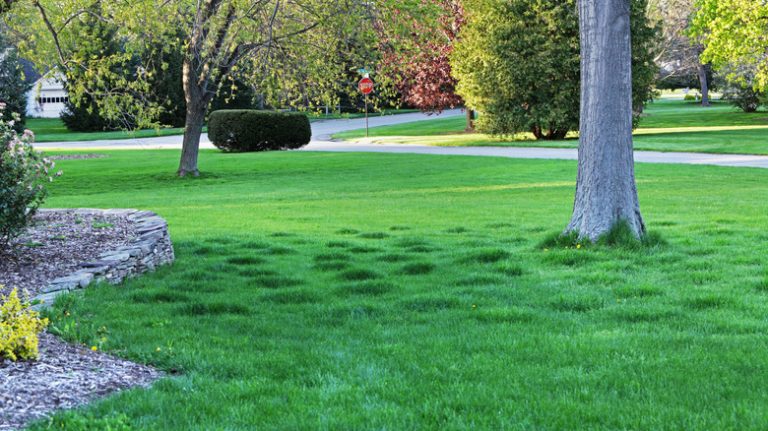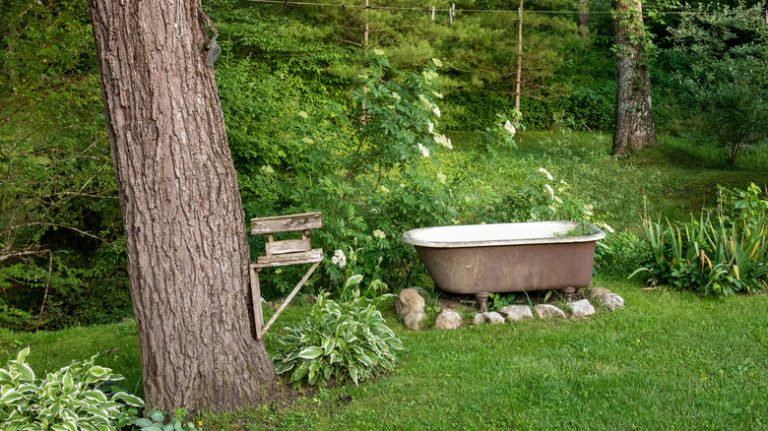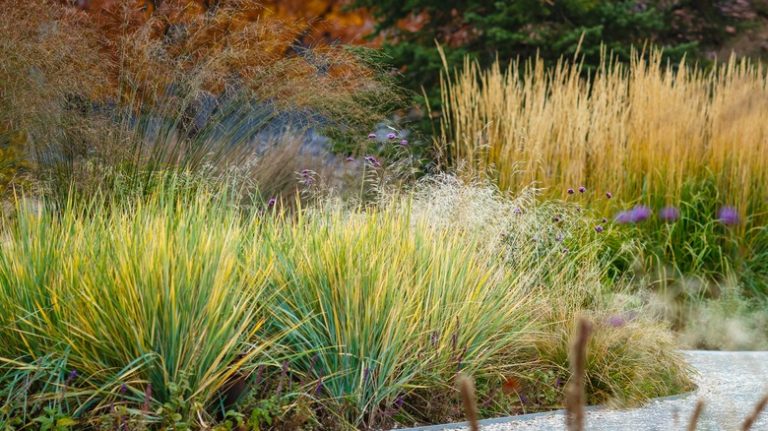We may receive a commission on purchases made from links.
Ping! Another bit of gravel from that garden edging you just installed has come loose and buried itself in the long grass, only to be hit by the blades of your lawnmower. You could be looking at a costly repair, not to mention the danger of sharp rocks flying around the yard at high velocity. We all know you can keep mulch in place in garden beds using mulch glue. Does it work on landscaping rocks, too? The answer is yes! Mulch glue is a cheap, safe, and easy-to-apply option to keep wayward pebbles in place. The only downside is you’ll likely need to redo the coating at least once a year.
Probably the best part about this nifty garden product is that you can use cleaning tools like leaf blowers without worrying about loose stones flying everywhere. So, what is mulch glue, and is it safe for your garden? Most mulch and gravel adhesives are made from water, starch, sugar, resin, and alcohol in a formulation unique to each brand. Some glues are organic; synthetic glues contain plastic polymers. If you’re concerned about what’s in a specific brand of mulch glue, check the ingredients list on the packaging. Make sure, too, that you choose a low-VOC and EPA-compliant product. Then, you won’t have to worry about off-gassing (though that’s not such an issue for outdoor glues) or the safety of plants, children, and household pets.
Buy, mix, and apply
Ever since we added these rocks to our backyard, they have become a messy problem. Rocks were always falling over, so we knew we needed to find a solution! We found this Mulch glue on @amazon and it was very easy to apply as you can see. If youre wondering how much to get, this bottle cocered all of our rocks & we still had some leftover! #mulchglue #landscapinghacks #homeownertips #rocklandscaping #tiktoktaughtme #outdoorhacks #backyardtips #landscapingtips #shemwellspaces #amazonfinds #amazonoutdoor #randomprojects #diyprojects #fixtheproblem
♬ Here Comes the Sun (Instrumental Version) – Instrumental Pop Songs & Soft Background Music
Watch on TikTok
Hippie Mulch makes a biodegradable, pet-safe, U.S.A.-made glue from all-natural ingredients that comes in a 1-gallon jug for $59.95. Larger sizes are available, too. Get super strong Landscape Loc Mulch & Rock Bond by Northrock from Menards (in-store only), 1 gallon for $33.69. PetraTools hyper-concentrated formula sells on Amazon for $29.99 for 32 fluid ounces, which covers 150 to 300 square feet. Concentrates generally perform better than ready-to-use formulations. You’ll also need a 1-gallon sprayer — or larger if you’re coating a big area — and disposable gloves if you’re worried about getting glue on your hands.
Glue in hand, you’re ready to keep those landscaping rocks in place for a good while. (Note: This isn’t a permanent solution; the glue needs to be reapplied every so often. More on this later.) If you haven’t already, ensure your gravel surface is level and compacted using a grading rake and tamper. Combine the glue with water in your sprayer — not in another bucket or container to save clean-up time. Typically, this is two parts water and one part glue, but proportions vary across brands, so always check the manufacturer’s ratio instructions. Shake the sprayer to mix well and start spraying your landscape rocks. Apply multiple coats evenly over the entire gravel surface, working your way from the farthest corner to the nearest. Wait until each is dry to the touch (it turns from white to clear) before starting the next coat — aim for two to three coats in total.
Expect to reapply

Mulch glue can take 12 to 24 hours to cure completely, so plan to tackle this project when the weather report forecasts a spell of sunny, dry weather. Porous rocks create the strongest bond — think crushed stone or lava rock. You may need to apply additional coats of mulch glue if your rocks are shiny or glassy. Still, depending on how well you apply the adhesive coating, how many layers you use, and the grade of your gravel, you might end up with a few loose rocks. Spot-spray those rocks with glue, or remove them from the pathway or border altogether. If your landscaping rocks see a lot of foot traffic — an often-traveled pea gravel garden trail, for example — you might have to reapply the glue as often as every few weeks. Again, spot apply wherever you see patches of loose stone, or try a stronger glue than the one you initially used to see if that adheres better.
Alternatively, learn how to DIY mulch glue. Mix one part of non-toxic white glue — think Elmer’s CraftBond or similar craft adhesives — with three to four parts water directly in your sprayer. Keep in mind that homemade mulch adhesives work better on small areas than large ones; the bond they create typically isn’t as strong as that of their specially formulated counterparts. And, as with the store-bought glues, plan to reapply this DIY glue more often if the gravel is exposed to adverse weather conditions or lots of activity.



